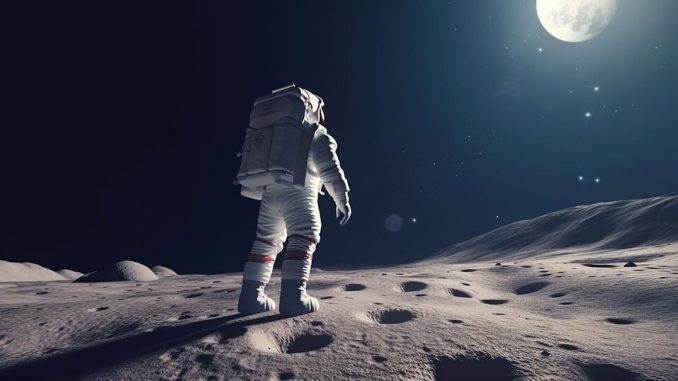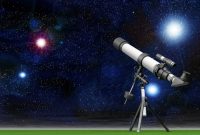
The Moon is one of the few celestial bodies that has captivated mankind. Its silvery sheen and pockmarked surface have drawn explorers and scientists for ages. The goals of state space agencies and the innovation of private firms have reignited lunar exploration. With its rich past and hopeful future, the Moon symbolizes human space hopes. This fascinating essay explores the complicated planning and endless possibilities for lunar missions, revealing the mysteries of our nearest cosmic neighbor and changing space travel.
The Artemis Program: Returning To The Moon
NASA’s ambitious and exciting Artemis Program aims to return people to the Moon. Artemis seeks to land the “first woman and the next man” on the Moon. This mission is about building a sustained Moon presence, not merely revisiting old areas. NASA is constructing the Space Launch System (SLS), the most powerful rocket ever, to launch people beyond Earth’s orbit. The Lunar Gateway, a Moon base, is critical to the Artemis mission architecture. It will host lunar landings and worldwide cooperation.
Commercial Lunar Missions: A New Frontier
Beyond government organizations, private space is joining lunar exploration, a significant change. SpaceX and Blue Origin are constructing lunar landers and rovers for transportation and infrastructure. The desire for a viable lunar economy, including resource use, drives commercial lunar missions. Water ice may be turned into drinking water, air, and rocket fuel, making long-term lunar colonization possible. Commercial companies see the Moon as a scientific and commercial frontier.
Scientific Goals And Discoveries
Scientists use the Moon as a book to learn about our solar system. The Moon’s billion-year-old geological records reveal Earth’s early days. Scientists study lunar rocks and soil to understand the Moon’s origin, turbulent history, and cosmic function.
Moon geology reveals the violent impacts and volcanic activity that created its surface. The lunar regolith, the loose, fractured material covering its bedrock, contains evidence about the many impact events that have scarred the planet. Using these regolith samples, scientists can establish the ages of lunar features and learn more about our solar system.
Moon exploration’s quest for water ice in permanently shadowed craters at the poles is thrilling. Moon water is essential to sustaining lunar settlement, not merely a scientific curiosity. Hydrogen and oxygen may be separated from water to make drinking water, air, and rocket fuel. Water on the Moon allows for self-sustaining lunar settlements and supplies Mars and beyond expeditions.
Humanity’s distant space travel goals need lunar exploration. Studying the Moon’s geology, resources, and ecology helps prepare for trips to Mars and other celestial worlds. Scientists and engineers can solve long-duration space travel problems and ensure the success of future human trips by testing technology, housing, and resource use on the Moon.
International Collaborations:
Collaboration is critical to lunar exploration. International space organizations, including the ESA, JAXA, and Roscosmos, are involved in lunar exploration. These connections go beyond science to exploration and peace. The lunar gateway allows international astronauts to live and work together in lunar orbit, demonstrating this global connection. It shows humanity’s capacity to collaborate on knowledge and discovery.
The Future Of Lunar Exploration
A persistent human presence on the Moon would change our connection with the universe. This lunar renaissance began with NASA’s Artemis Program’s ambitious objective of landing the “first woman and the next man” on the Moon. Artemis is about starting a new era of lunar exploration, not merely returning to old lunar vistas.
NASA’s mighty new rocket, the Space Launch System (SLS), is crucial to Artemis’ mission design. This massive rocket will carry people and Orion beyond Earth’s orbit. The Artemis Program’s Lunar Gateway is another innovation. Astronauts prepare for lunar landings at this Moon colony. Multiple space agencies built and operated the Lunar Gateway, demonstrating worldwide collaboration.
Commercial lunar missions also mark a new lunar exploration age. SpaceX, Blue Origin, and others are constructing lunar landers, rovers, and infrastructure enabling affordable lunar access. Commercial lunar operations are about making the Moon a resource-rich celestial body, not only exploration. Water ice in continuously shaded polar craters is a primary Moon resource. Water sustains life and powers distant space missions, including Mars expeditions.
Beyond the Artemis Program, lunar exploration will continue. Artemis prepares for human lunar presence and future lunar dwellings and research stations. Science, long-term residence, and preparations for human expeditions to Mars and other planets are planned for these habitats. Life support, resource utilization, and radiation protection technologies established for lunar exploration apply to long-duration Mars missions.
Due to its closeness to Earth, the Moon is a great place to test and improve technology, gather expertise, and prepare for more ambitious solar system missions. Lunar exploration connects Earth to the mysterious universe. The stepping stone to humanity’s next major leap into space sets the groundwork for an incredible future of space exploration and human presence beyond Earth.
Conclusion
Lunar exploration is a monument to human curiosity and drive, not simply science. Humans returning to the Moon and establishing a sustained presence is a daring future step. This project combines government space organizations and the rising private sector, which views the Moon as a new research and economic frontier. The Moon’s geological history and resource possibilities are being revealed via lunar missions.
International partnerships show that lunar exploration is a worldwide endeavour to investigate, learn, and collaborate. Artemis’s and humanity’s obsession with the Moon will fuel lunar exploration and offer a sustainable human presence beyond Earth. This expedition looks to the past and the stars to influence space exploration for future generations.






Leave a Reply